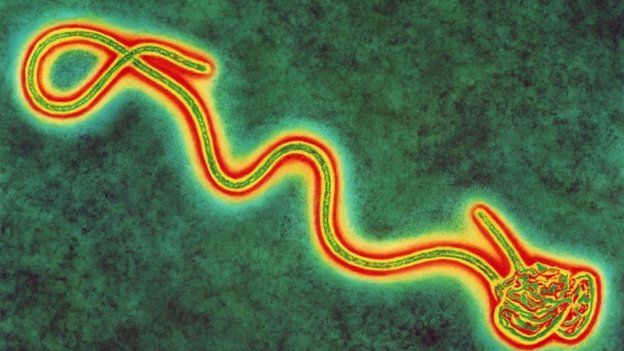
The process by which Ebola virus transmits through direct contact with the bodily fluids of infected individuals is well covered in scientific literature. But little is known about the life the virus has – if any – outside the body. For example, does Ebola remain active on glass surfaces and countertops? Does it persist in sewage and wastewater systems?
Such questions are rarely addressed in currently published literature, say scientists from the University of Pittsburgh (Pitt) and Drexel University, Philadelphia.
They report their findings – or lack of them – and why it is important to find some answers, in a paper published in the journal Environmental Science & Technology Letters.
The current Ebola epidemic in West Africa, which began in the dense forests of Guinea in March 2014, is the largest and most complex outbreak since the virus was first discovered in 1976. So far, there have been more than 18,000 cases and at least 6,500 deaths, though officials warn those figures underestimate the outbreak’s magnitude and fatality rate.
The size and scale of the epidemic have raised significant unanswered questions for the scientific and engineering communities, as well as the general public – questions about “Ebola virus’ persistence in the environment and the potential for an environmental route of Ebola virus exposure,” write the authors.
Ebola disinfection practices are not consistent
Knowing how long Ebola virus can live outside the body – on surfaces, in water or in liquid droplets – is important for setting out disinfection guidelines and practices to prevent spread of the disease, the team explains.
Currently, there are inconsistencies in Ebola disinfection practices, depending on the setting. For example, the current World Health Organization guidelines say it is safe for hospitals and clinics to flush liquid waste from Ebola patients down the toilet or dispose of them in a latrine. But in research labs, the liquid waste from Ebola patients must be disinfected before it can enter the sewage system, note the authors.
In an effort to resolve some of these contradictions, the authors searched the scientific literature to find out how long Ebola can survive in the environment. But despite an extensive search, they could not find any evidence to back up the WHO assertions.
“The World Health Organization has been saying you can put (human waste) in pit latrines or ordinary sanitary sewers and that the virus then dies,” says lead author Dr. Kyle Bibby, assistant professor of civil and environmental engineering at Pitt’s Swanson School of Engineering. “They may be right, but the evidence isn’t there.”
It would be ‘imprudent to dismiss potential for environmental transmission’
In their paper, the authors note there are suggestions that Ebola virus is inactivated at “a rate more rapid than or comparable to those of typically monitored enteric viruses.” However, nobody has published studies that show whether Ebola virus can cause infection from a contaminated surface or that measure how long it remains active in sewage, water, wastewater or sludge.
The authors argue that while the prevailing thinking is that the environment is not the main exposure route for Ebola virus disease, it would be “imprudent to dismiss the potential of environmental transmission without further evidence.”
They conclude that Ebola’s persistence outside the body needs more careful investigation, through environmental persistence studies and microbial risk assessments. Only then can we “properly inform the safe handling and disposal of Ebola virus-contaminated waste,” they say.
To this end, Dr. Bibby has secured a $110,000 grant from the National Science Foundation to identify surrogate viruses that are similar to Ebola and study their survival rates in water and wastewater.
